
September 23, 2011
Another simple, late summer recipe from Nigel Slater in the Observer. It’s a fresher, more up-to-date version of the traditional dish of carrots in parsley sauce.
Nigel says: “A bunch of young carrots doesn’t last long in this house. Munched like sweets, they often go before I even have time to rinse them. The usual cooking method is to steam them and toss them in butter and chopped parsley. Nothing wrong with that, but this way is much more interesting.”
Serves 4 as a side dish
Preparation / cooking: 20 minutes
Ingredients
slim, young carrots 2 bunches
shallot 1, medium-sized
basil 1 small bunch
parsley 6 bushy sprigs
dill 8 sprigs
crème fraîche 200ml
lemon juice a good squeeze
Wipe or rinse the carrots, but don’t peel them, then place them in a steamer basket or colander set over a pan of boiling water. Steam for 7-10 minutes till tender, but not soft. If you prefer to boil them in lightly salted water, do so, then drain them.
Peel and very finely chop the shallot. Remove the leaves from the basil and parsley and discard the stems, then chop them, quite finely, together with the dill fronds. You should have a couple of good handfuls of chopped herbs. Put the crème fraîche into a saucepan large enough to take the carrots in a single layer, add the shallot, herbs and the lemon juice and bring to the boil. Season with black pepper and a little salt, then add the drained, whole carrots. Leave to simmer for a couple of minutes with the occasional stir, taking care not to break the carrots up. Serve immediately.
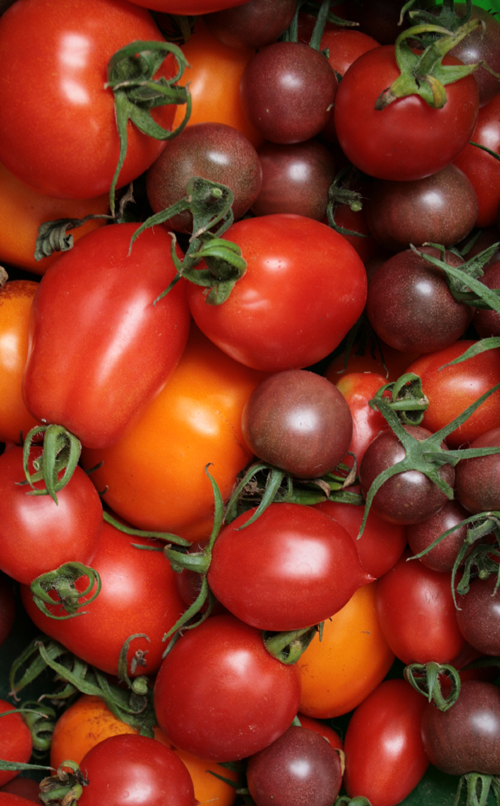
September 22, 2011
Another great box brimming with tasty veg coming your way! Everything apart from the potatoes is grown on the Camel CSA’s own plot in north Cornwall. Contents may differ ever so slightly if it turns out we can’t harvest enough of each vegetable for each box.
Everyone should have:
potatoes (Burlerrow Farm, St Mabyn)
* broccoli
* french beans/runner beans
* lettuce leaves
* tomatoes
* cucumber
* carrots
* tuscan/curly kale
* turnips
* onions
Standard boxes will also have:
* peas
* peppers
* aubergines
* parsley
* = grown to organic principles

September 20, 2011
Thousands of people in England are improving their overall quality of life by getting involved in community supported agriculture.
But a lack of public awareness means that many more are missing out, according to new research from the Soil Association.
“Community supported agriculture is an exciting, dynamic, growing movement. It’s all about sharing and giving people proper access to local produce. It’s making a real difference to people’s lives,” Josiah Meldrum of Provenance told the Soil Association’s CSA conference in Bristol.
Indeed, the pace of expansion is impressive. Of the 76 fully-fledged CSA schemes in England, 66 of these got going in the last three years. Another 120 are in the process of setting up.

Public understanding is lacking, however. Two thirds of 1,000 shoppers who took part in a survey had never heard of community supported agriculture schemes like ours in Cornwall.
The Soil Association commissioned Provenance researchers Nick Saltmarsh and Josiah Meldrum to judge the impact of CSAs in England. They concluded there are enormous social, environmental and economic benefits for members and the wider community.
More than 70 per cent of of CSA members feel their overall quality of life has improved. Almost half believe they’re having a significant impact on the community by bringing people together.
At least three quarters are involved because they want access to healthy, high-quality, sustainably-produced food. Two thirds of them find that the vegetables provided supply nearly all their needs.
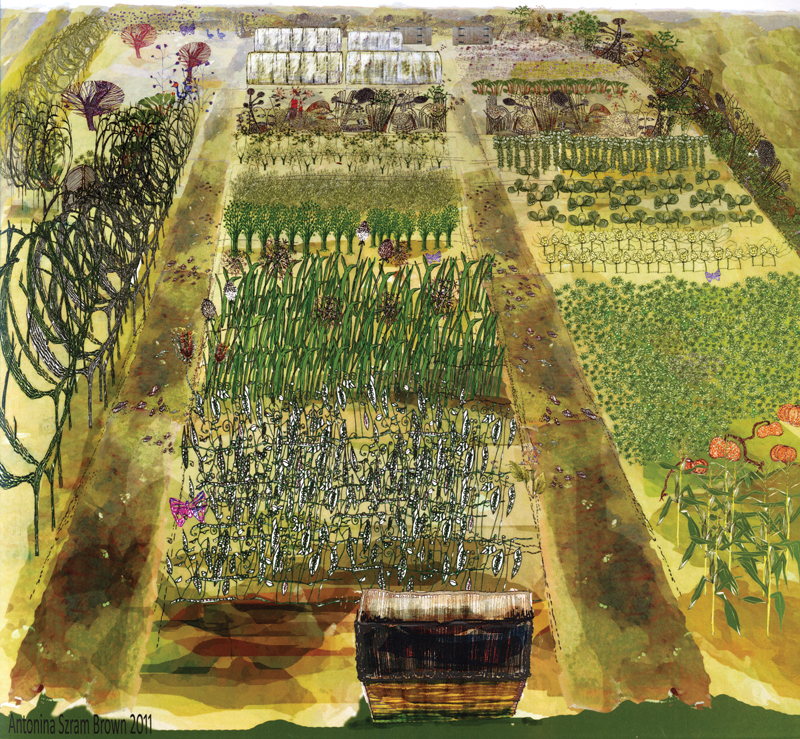
Remarks included:
Food has become interesting again…
I feel involved in the production of the food I eat and have become more connected to the land…
I feel part of something that is truly pioneering, that I am contributing in some way to different more sustainable way of living…
It makes me feel happy – at quite a deep level – that I’m playing a small part in helping such an excellent scheme to thrive…
You can have a more detailed look at the main findings on the Soil Association’s resources pages: –
The full report will be published in October.

September 16, 2011
This simple but tasty version comes from The Hairy Bikers. Perfect for the tomatoes and chillies in Camel CSA’s veg boxes this week.
Raw salsa is a delicious and easy accompaniment to all sorts of food – from simple Mexican corn chips to Tex Mex dishes from chilli con carne to guacamole to beef fajitas to beef tacos to vegetarian nachos. It also makes a very good chunky dip for raw vegetables.
Preparation: 10 minutes
Cooking: None
Ingredients
250g/9oz fresh tomatoes, finely chopped
1 small onion, finely chopped
3 mild chillies, finely chopped
bunch coriander, finely chopped
salt, to taste
lime juice, to taste
1 tbsp water
Method
To make the salsa, combine all the ingredients together in a bowl and serve immediately.
Couldn’t be easier!

September 15, 2011
This illustration of Camel Community Supported Agriculture’s grow-our-own veg plot in Cornwall is by the very talented artist Antonina Szram Brown.
Antonina and her husband Jeremy run St Kew Harvest Farm Shop, specialising in good food and fresh produce that includes their own homemade artisan bread. They’re both deeply committed to making local food work in our part of north Cornwall.
Camel CSA rent two acres of land from the Brown family at St Kew Highway near Wadebridge. Jeremy is one of the local growers who supplies top-quality produce for our weekly veg box scheme.

September 14, 2011
Friday’s veg boxes are yet again full to the brim with Camel CSA’s bountiful Cornish autumn harvest.
This week everyone will have: –
* potatoes (Burlerrow Farm, St Mabyn)
* broccoli (Camel CSA)
* Swiss chard (Camel CSA)
* cabbage (Camel CSA)
* French beans or peas (Camel CSA)
* tomatoes (Camel CSA)
* carrots (Camel CSA)
* onions (Camel CSA)
* rocket (Camel CSA)
* chillies (Camel CSA)
Standard boxes will also have: –
*aubergines (Camel CSA)
* peppers (Camel CSA)
* turnips (Camel CSA)
* parsley (Camel CSA)
* = grown to organic principles
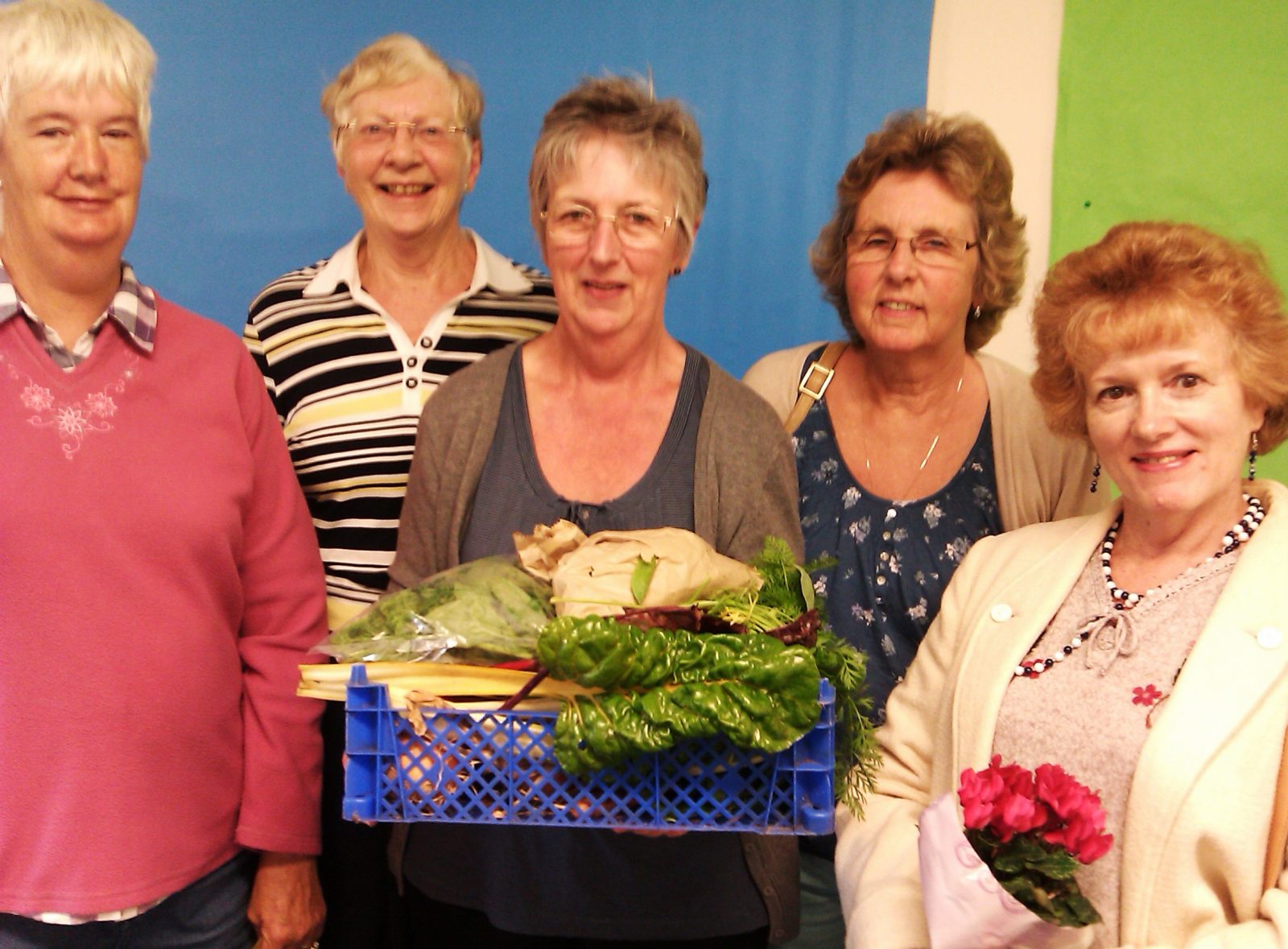
September 10, 2011
Members of Egloshayle Women’s Institute in north Cornwall now know all about our grow-your-own local food project at St Kew Highway.
Camel CSA had the guest slot at the WI’s September meeting in the Egloshayle pavilion, Wadebridge. Afterwards, a small but orderly queue lined up to get membership forms and more details of our weekly veg box scheme. We hope very much they’ll join us.
WI secretary Christine Pearn was the lucky lady who won the raffle to take home our veg box.
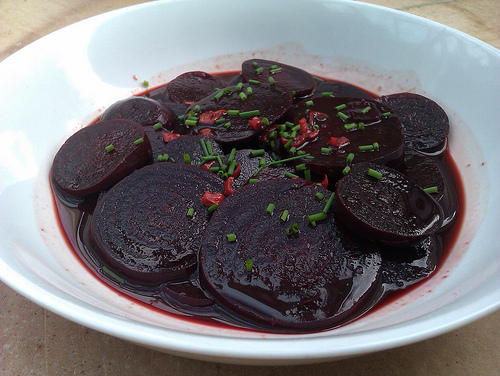
September 9, 2011
A Nigel Slater salad from the Observer. It goes beautifully with Cornish smoked mackerel and is perfect made with the red chillis in Camel CSA’s veg boxes this week.
Nigel says: “Anyone who likes cooked beetroot, but isn’t fond of it pickled, may like to try this way with them. The salad has some of the crisp, acidic flavour of a good pickle, but is infinitely more mellow. I had intended this to be a side dish, but it is so good, it became the focus of a light lunch with smoked salmon and rye bread. Lovely fresh flavours and a good introduction to beetroot for the uninitiated.”
(I used cider vinegar instead of sherry vinegar.)
Serves 4 as part of a light main course
Preparation / cooking time: 60 minutes
Ingredients
raw beetroot 6 small to medium
oil vegetable, rapeseed or groundnut
For the dressing:
ginger, freshly grated 1 tsp
orange juice 125ml
lemon juice 3 tbsp
dark soy 3 tsp
small, red chilli 1
sherry vinegar 1 tbsp
Scrub the beetroot and trim its leaves, without tearing the skin, then either boil or bake till tender to the point of a knife. To bake, set the oven at 200C/gas mark 6, place the beetroots on a sheet of foil, pour over a glug of mild cooking oil then close the foil loosely over them. Bake for 40 minutes or so, depending on the size of your beets, till you can insert a skewer easily into them. To boil them, drop the beetroots into boiling, unsalted water and simmer, partially covered, for 20-30 minutes till tender.
Remove the skins from the beetroots – they should be easy to push off with your thumb. Slice the beets roughly the same thickness as a pound coin then put them in a serving dish.
Make the dressing: put the grated ginger in a mixing bowl, pour in the orange and lemon juices then add the soy sauce. Halve, seed and finely slice the red chilli, then add a little of it to the dressing with the sherry vinegar, and mix well. Check for balance – it should be sweet, sour and fruity. Add more soy or juice, or chilli as you wish. I find that barely half a small chilli is enough. Spoon the dressing over the sliced beetroot and leave for a few minutes before serving.
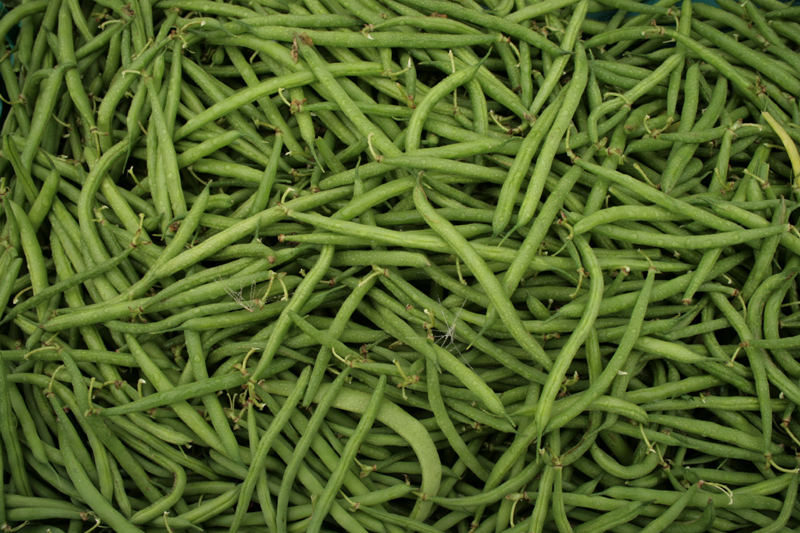
September 8, 2011
As Camel CSA expert grower Jane Mellowship says, ‘Lots of lovely veg to harvest this week, making the boxes fit to burst!’ As always at this time of year, contents subject to change.
This week everyone will have:
potatoes (Burlerrow Farm, St Mabyn)
* french beans (Camel CSA)
* spinach (Camel CSA)
* beetroot (Camel CSA)
* cucumber (Camel CSA)
* tomatoes (Camel CSA)
* onions (Camel CSA)
* garlic (Camel CSA)
* chillies (Camel CSA)
Standard boxes will also have:
* peppers (Camel CSA)
* aubergines (Camel CSA)
* turnips (Camel CSA)
* kohlrabi (Camel CSA)
* = grown to organic principles

September 2, 2011
Camel CSA’s weekly veg box members keep asking: “What’s that pale greenish-white sputnik-like vegetable in the veg boxes? And what do I do with it?”
Kohlrabi are easy to grow, not often seen in the shops and highly underrated. They have the combined taste and texture of radishes and turnips – but are milder, crisper and more juicy.
I love to eat smaller ones raw – just peel and slice them into batons or matchsticks. They can be grated as a crunchy addition to salads, made into a kohlrabi remoulade, or cubed and steamed before dressing with oil and lemon juice. Some people even stuff them! (But I think life’s too short for that.)
This recipe comes with some useful tips on cooking with kohlrabi from Hugh Fearnley-Whittingstall in the Guardian. He says: “If your kohlrabi still has its green leaves attached, combine them with the spinach in this tasty gratin.”
The spinach could be replaced with some of the Swiss chard we’re getting in Camel CSA’s weekly veg boxes at the moment. Oh – and I used creme fraiche instead of double cream.
If you have just one kohl rabi, you could make this for two people (or for four as a side dish) simply by dividing the amounts by three.
Serves 6
Preparation: 20 minutes
Cooking: 35 – 40 minutes
Ingredients
1 tbsp sunflower oil
1 knob butter, plus a little more for greasing the dish
2 medium onions (about 600g), halved and finely sliced
Salt and freshly ground black pepper
500g kohlrabi, peeled and cut into 3mm thick rounds
250g potatoes, peeled and cut into 3mm rounds
2 tsp thyme leaves, chopped
200ml double cream
200ml water (or chicken or vegetable stock)
1 big handful baby spinach, or spinach mixed with kohlrabi leaves
1 tbsp parsley, chopped
For the topping
60g fresh breadcrumbs
25g butter, melted
45g cheddar or hard goat’s cheese, grated
Method
Preheat the oven to 190C/375F/gas mark 5. Place a medium-sized frying pan over a medium heat. Add the oil and butter, wait until it foams, then add the sliced onion and a pinch of salt, and sauté for 12 minutes, until soft and starting to take on a little colour.
Throw in the kohlrabi, potatoes and thyme, and season generously with salt and pepper. Cook, tossing the mixture occasionally, for another five minutes.
Pour over the cream and stock, simmer gently until the liquid is reduced by half, stir in the spinach and parsley, then place in a lightly buttered gratin dish, about 30cm x 20cm x 7cm in size, levelling it out with a spatula as you go. Place the gratin dish on a baking tray.
Blitz together the breadcrumbs, butter and cheese in a blender, and sprinkle over the top of the filling. Bake the gratin in a hot oven for about 35-40 minutes, until all golden and bubbling.


